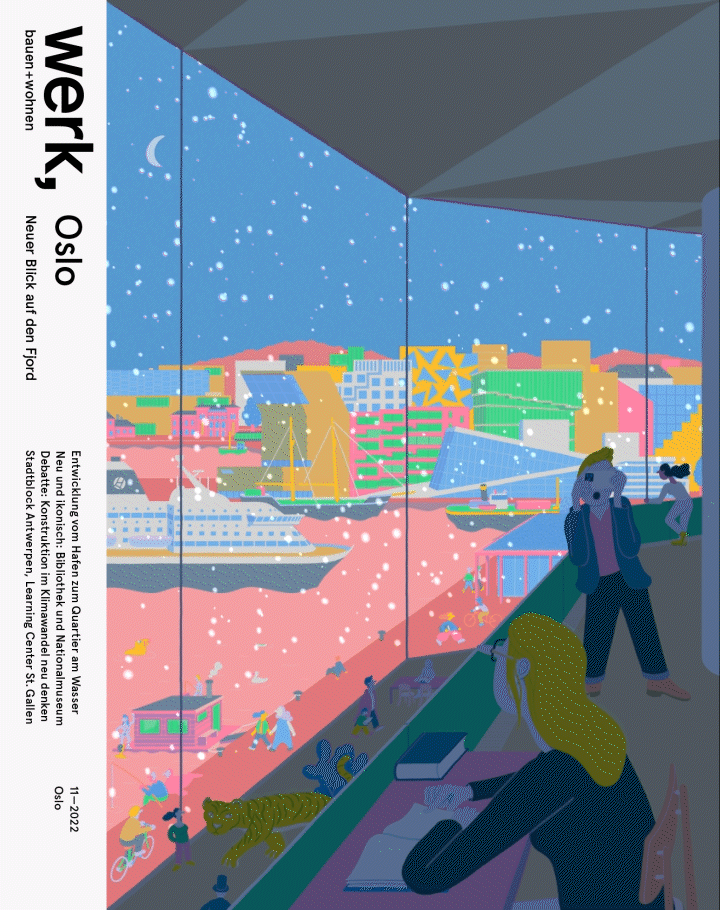werk, bauen + wohnen 11 – 2022

Performances beside the Opera
Included in the baggage for our trip to Oslo there was a question: after the Opera House, what is the next act? Cycling along the fjord, our first visit was to the architecture office Snøhetta. Norway’s best-known practice has its head office directly on the shore, in front of the cliff on which the Akershus Fortress stands. Through the large windows of the historic factory building enormous cruise ships can be regularly seen entering the harbour — an atmospheric environment for an office that is now a global architecture player. Like when it transformed the opera house into a landscape, this practice still works in an interdisciplinary fashion and the concept of the openness of a building is still of vital importance, Kjetil Thorsen, one of the founders of the office who in his heart is still a social democrat, assured us. While the concept of the opera remains extremely fresh, the second part of the presentation made up of three hundred slides that the office wanted us to take with us was an excessive hype: museums, campuses, and concert halls for the entire world, without either social or democratic ambitions.
On the bikes we continued our sightseeing tour to the next bay. Numerous districts have developed around the opera but none of them can match the “Iceberg”. In this regard the bow made by the neighbouring Munch Museum offers little help. The office and speculation city along the railway, disguised as bar code stripes, is an architecture zoo, without any feeling for open space or scale. Even the new residential buildings emanate little charm and look like what they actually are, investments for the nouveaux riches.
This situation cannot be due the national wealth, if one considers all the money that has flowed into Norway’s coffers since oil was discovered in the North Sea in 1969 — there are currently 1.3 trillion euros in the state fund! With this kind of money, a social housing project would certainly be affordable. However, in the 1970s the wrong course was taken, as one learns in this issue. The new National Museum was our last faint hope, but it does not show the slightest trace of an open museum. The only bright spot in our research work — alongside a number of successful conversions — was the new library behind the opera. It offers a wide range of services that are open to everyone, for migrant communities in particular (there are not only tourists like us!) it provides
a safe harbour. — Roland Züger, Jenny Keller